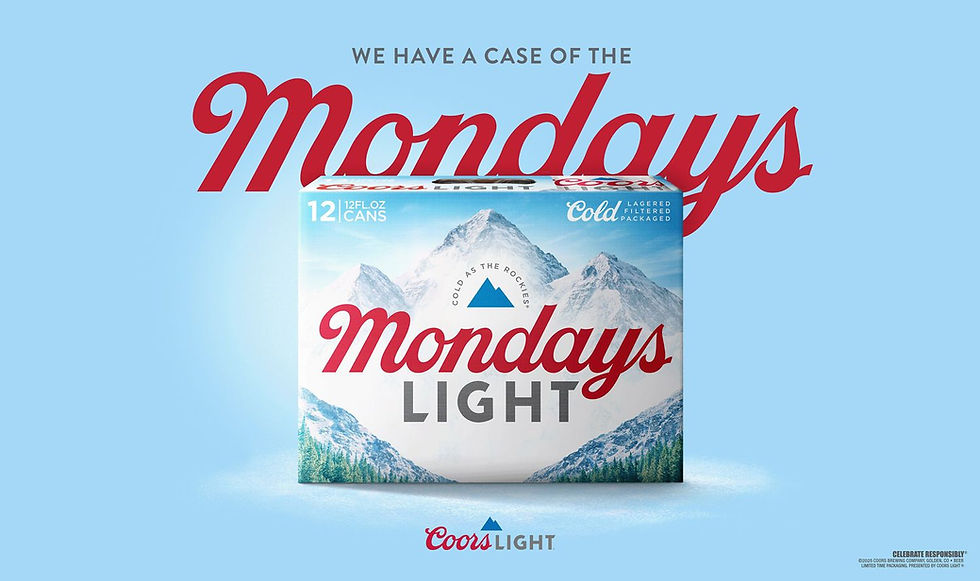The Stories That Live Within Your Brand Can Ignite Success
- Brooke Lighton

- Oct 24, 2024
- 4 min read
I’ve been in the ad game for several decades, and I’m always curious about what makes for a standout campaign. I believe storytelling is a key factor, but that can come in many different approaches, as we’ll see here.
Our agency was invited to create a capital campaign for Luther Midelfort — a Wisconsin hospital under the Mayo Health System banner. It was seeking to raise money for its emergency department. So, we went there to interview their marketing team and learn more about the facility, their target audience, their patients, and goals.
Then we got into the human side of the story. And it was unforgettable. A farm family, The Hynaks, had put their two-year old son Paulie to bed one night during a blizzard. Later, the couple went to bed themselves. When they got up in the morning, Paulie was nowhere to be found.
They searched inside and out in vain until the paramedics arrived and found a lifeless little body in a snow drift. It seems Paulie had woken up and managed to get outside where he got stuck in the snow and died. It looked hopeless. However, Mayo air-lifted Paulie to their main trauma center, where they warmed his body, put him on a heart/lung bypass machine, and brought him back to life. We titled this campaign Life goes on.
Here’s how the campaign read:
Headline: Paulie Hynek fell into the deep snow and died.
February 27, 2001
Body temperature: 64 degrees
Pulse: 0
Time down: 9 hrs.
Respiration: None
Pupils: Fixed
Status…
Brought back to life
February 27, 2001
Luther Midelfort
Life goes on.
The Life goes on campaign was, at the time, the highest-earning capital campaign Luther Midelfort had ever ran. With it, they were able to build out a new trauma care unit, consolidate services with the neuro/trauma ICU, and create additional capacity, such as bringing on nurses with specialty training in a variety of essential disciplines. All with the help of a toddler’s story of death and resurrection.
When a story moves people like this one did, it’s more than just using storytelling in your marketing: it’s a powerful strategy that becomes a signature of your brand. Where else did we achieve this?
The endorsement
In the mid 2000’s, we were tasked with coming up with a campaign for Aon when they purchased the rights to put their sponsor logo on the jerseys of the Manchester United Futbol Club. This was an expensive proposition, and the assignment came with certain cautions. For instance, we were told not to show only one player in any part of the marketing campaign; either digital or print.
So, how do you make your client the hero when aligned with one of the world’s most renowned teams? You make your content the hero. Here’s a sample:

We used dominant content (in red) to call out certain words, so if the reader only read part of the ads, they’d get a strong message. These words included:
Agony
Poetry
Strategy
Artistry
Aon
Treachery
Mastery
Agility
Excellence
Aon
Tenacity
Ignites
Mastery
Synergy
Aon
The action photography featured the jerseyed players, and provided a nice backdrop to the large font that filled the page. Pop-out words teased the reader in and underscored brand strengths, even if the reader didn’t consume every word of the copy.
So, in this case, the physicality of the players was prominent, but the Aon story had its own drama through word play, font size, and dynamic messaging. In this case, the drama of the imagery, and the verbiage worked in harmony — like strong team players.
Creating a vibe
But what if your assignment is the announcement of a new blues bar in one of the centers for the blues music scene, Dallas, Texas?
The Dram was launched by two brothers from Scotland who came to the U.S. to fulfill their own American dream. The Dram was situated on the corner of Henderson and Miller Avenues in the heart of the Dallas music scene. The brothers brought in impresario Tony Dalano who managed over 50 restaurants and bars in more than 20 states — major brands such as The Hard Rock Cafe, Joe’s Crab Shack, and Dick’s Last Resort. In Tommy’s words, “The Dram will be the kind of place Dallas hungers for — where spontaneity and cocktails foster the best connections.”
Our job was to create a microsite announcing The Dram. It had to be more than informative, but create a vibe that connected with the young blues set. Something dark but fun; a tongue- in-cheek message that hipsters could identify with. The site had rotating screens that spoke to the audience:
The Dram.
Good cocktails, the kind you’d drink with Jack Kerouac, Carrie Bradshaw, and a wasted rock star.
The Dram
A cocktail high wire act.
The Dram
Where casual is in but haute is by no means out.
It’s on at The Dram turned out to be a highly successful campaign, drawing in music groups, and putting the club at the top of the list for Dallas entertainment.
What do these campaigns have in common? At first glance, not much. But if you consider the rather bland, unfunny landscape of marketing today, the campaigns shown here have a kind of verve that seems to have gone missing in an environment of political correctness and cancel culture.
The point here? Let’s make marketing fun, empathic, and content rich again.

















Comments